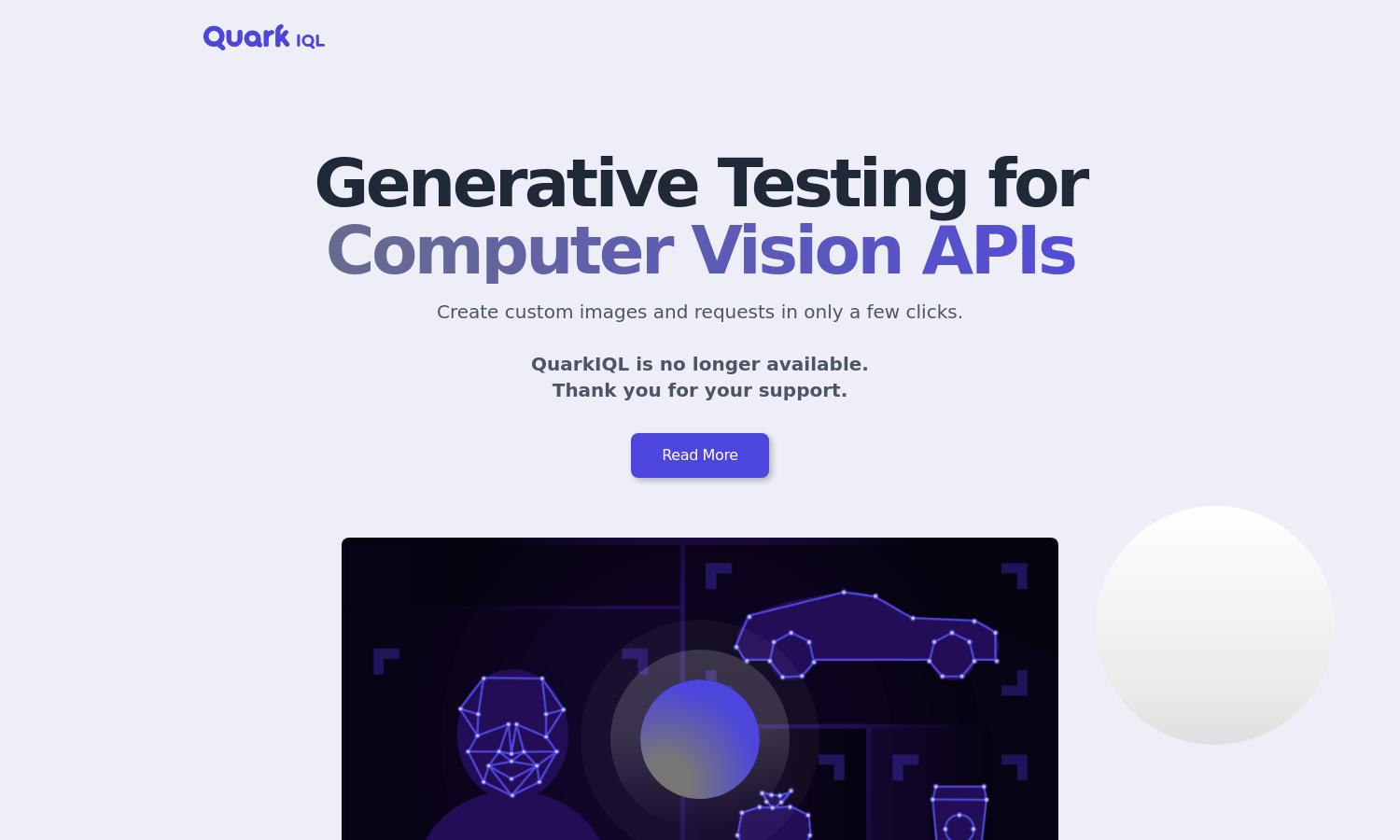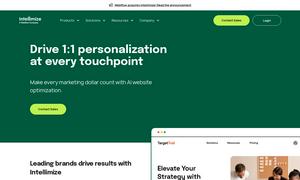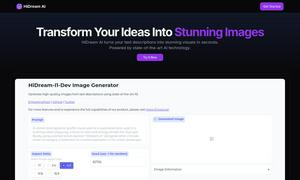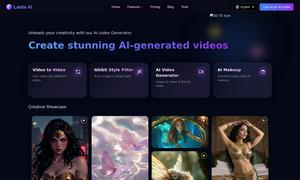QuarkIQL

About QuarkIQL
QuarkIQL was a platform designed for developers seeking efficient solutions for testing Computer Vision APIs. It allowed users to quickly generate custom images through advanced diffusion models, simplifying the testing workflow. With easy request handling, QuarkIQL effectively addressed the challenges developers face in image API testing.
QuarkIQL offered accessible pricing plans tailored for various user needs, ensuring valuable features at each tier. While specific details on pricing are no longer available, prior offers emphasized the benefits of upgrading, providing enhanced capabilities and support for developers looking to optimize their image API testing experience.
QuarkIQL featured a user-friendly interface designed for seamless navigation, allowing users to effortlessly create custom test images and manage their queries. Its clean layout and intuitive design elements enhanced overall user experience, making image API testing straightforward and efficient for developers.
How QuarkIQL works
Users of QuarkIQL began their journey with straightforward onboarding, allowing immediate access to its features. They could quickly generate custom test images by inputting prompts into the diffusion models available on the platform. Users managed GET and POST requests seamlessly, tracking their queries for easier experimentation and efficiency.
Key Features for QuarkIQL
Custom Test Images
QuarkIQL's standout feature was its ability to generate custom test images quickly using advanced diffusion models. Users could simply input prompts and immediately receive the desired images, significantly speeding up their API testing process and enhancing the quality of their development work.
Query Logging
QuarkIQL's query logging feature allowed users to track their testing history efficiently. This unique aspect enabled developers to run multiple experiments without losing their progress, enhancing productivity and offering a more organized approach to image API testing and research.
Flexible Requests
The platform facilitated flexible request handling, including GET and POST methods, allowing developers to closely align their workflows with their needs. This key feature ensured users could easily leverage various requests to enhance their development processes within the context of image API testing.
You may also like:








